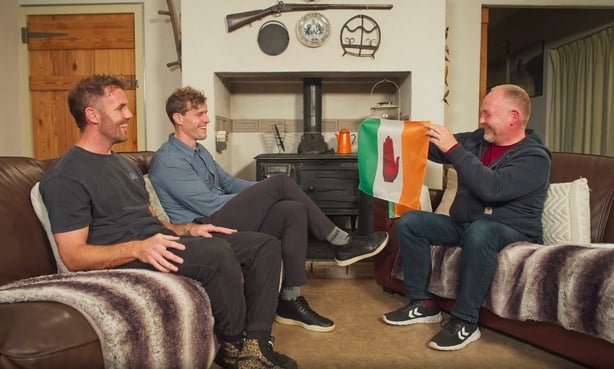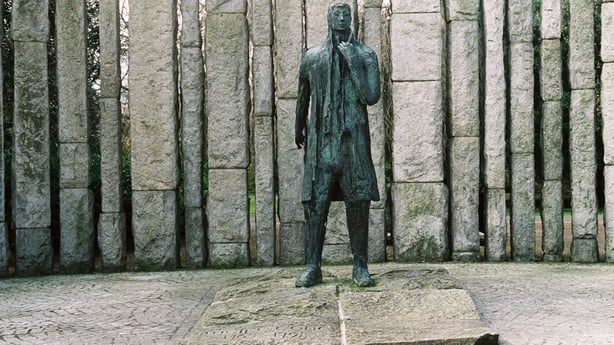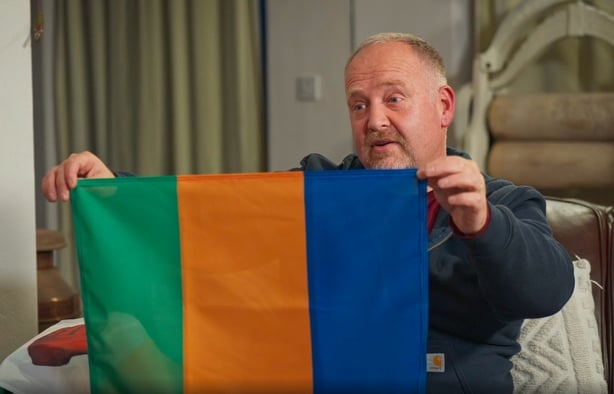For years, Ulster and Ireland rugby star Andrew Trimble, pulled on the green jersey of Ireland and the red and white of Ulster with equal pride and passion, and no sense of conflict. In a new documentary, he explores his Ulster-Scots roots and asks whether and how it's possible for different cultures, traditions, loyalties and identities to co-exist peacefully on this island, as they always have in his life. Mark Thompson, the programme's Ulster-Scots consultant puts the film in historical context.
"Every age has its own outlook… We all, therefore, need the books that will correct the characteristic mistakes of our own period. And that means the old books". - C.S LEWIS
Stepping out of our own era enables us to see different, older, realities. Ireland is an island of cultural variety. However, nearly everyone on this island has had our 'big picture' understanding shaped by a political duality, so regularly reinforced that we think that everything here has always been divided into two.
Pick your label
Orange and Green. Unionist and Nationalist. Protestant and Catholic. Irish and British. Pick your label, or even merge them. Certainly in Northern Ireland over the past 60 years or so, the Troubles/Conflict has forged our sense of ourselves.
This simplicity makes for an easy story. It’s a convenient shorthand which is perpetuated by our current affairs media, our schools, other institutions, and by government policy. It probably serves the interests of some to keep us all thinking in that dualistic way.

A more complex story
But what if that’s not the full story? What if the cultures, not politics, of Ireland, can present us with a broader world? Not two opposing political aspirations, but three interwoven cultural communities. Wolfe Tone understood these ‘three strands’, in his famous words:
"substitute the common name of Irishman in place of the denominations of Protestant, Catholic and Dissenter."
A ‘three stranded’ Irishness. People raised in our recent ‘two tribes’ context, who read these famous words, might imagine that he meant the generically ‘Protestant’, the specifically ‘Catholic’ and a third group who were ‘Neither’. However, as he himself said, he was referring to the three main faith ‘denominations’. These were Church of Ireland or Anglican, Catholic, and the non- Church of Ireland dissenting reformed denominations. Another 1798 Rebellion leader, Presbyterian minister Rev William Steele-Dickson, put it more simply when he wrote of ‘Catholics, Protestants and Presbyterians’. Three cultural communities. Not two.

Vexillology, the study of flags, doesn’t have to vex us. It can be illuminating. Thomas Francis Meagher gets the credit for the design of the Irish tricolour. His original version of 1848 was a visualisation of white peaceful reconciliation of prior conflict between the Green community and Orange community. But the white middle carried a further statement. He incorporated an additional emblem as a message to England. The written descriptions say:
"upon that white centre, the red hand that struck her down from the hills of Ulster".
A different sort of tricolour
Two years later, in 1850, an Ulster Presbyterian minister, Rev David Bell amended Meagher’s design. Rather than a symbol of political reconciliation between the two, he envisaged a banner of cultural recognition of the three. It was described in newspaper accounts as:
"a flag which bore upon its folds the Catholic green and the Protestant orange and the Presbyterian blue, unfurled to the breeze, to float over a prosperous, a free and a happy people"
This flag was used at Tenant Right campaign meetings which attracted crowds of up to 30,000 people across the island at places including Enniscorthy, Ballybay, Omagh, and the site of the Battle of the Boyne, a statement of inclusion - of three, not two.

When James Connolly’s friend Ernest Milligan (one of Alice’s brothers) wrote a slim collection of Ulster-Scots infused poetry back in 1908, the Dublin newspaper Freeman's Journal and National Press published a review. The reviewer expressed ‘shock’ on behalf of its readership that it transpired there were not merely ‘two traditions’ in Ireland, but three:
...In these days, when the chief city of Ulster and many towns and country districts all over it are become working centres of the Gaelic revival...busily working for the de-Anglicisation of the Irish nation...behold here is reminder that there exists within the borders of our island a country population which is not West British nor shoneen, which has not got to be de-Anglicised, for the simple reason that its speech is not English, as we know it, but Lowland Scotch.
The people speaking this tongue are to be found mainly in Antrim, Co. Down, but also on extensive tracts of land in the North-West.
An Ulster-Scots poet called Samuel Thomson, wrote some lines around 1790 that show more understanding of the inherent cultural diversity of Ireland than almost anything today:
"I love my native land no doubt,
Attached to her thru’ thick and thin
But though I’m Irish all without
I’m every item Scotch within…"
Ireland is an island of cultural variety. Culture is soft-edged and is shared in multiple ways. Whatever the high politics of present and future might be, a recovered understanding of that grassroots, community, cultural variety will be to the mutual benefit of us all.
Andrew Trimble: For Ulster & Ireland airs at 21:35 on Monday 12th February on RTÉ One.
The views expressed here are those of the author and do not represent or reflect the views of RTÉ
Mark Thompson is a writer, designer and branding and communications expert with a passion for Ulster-Scots culture and heritage. He was Chairman of the Ulster-Scots Agency between 2005 and 2009. The Ulster-Scots Agency is a cross-border body that was established under the Good Friday Agreement.











































